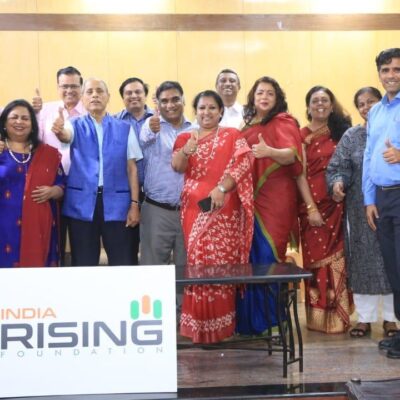
New Delhi: Showing a strong real GDP growth rate on one side and worrying as if the economy is much weaker on the other hand is one of the untold paradoxical economic tales.
Over a decade, policymakers have been worried that private investments are not picking up, despite many policy measures to induce investment. In this article, we will see the nature of the problem — why private investments matter, what the upshot is, private sector trends in the past five years, and end with a conclusion.
Nature of the problem
The sum of all expenditures is used to determine India’s GDP. The largest portion that accounts for 60 percent of India’s GDP comes from the consumption expenditure of all Indians (i.e. Individual/ Personal Expenditure of all Indians).
Think of private businesses building new factories and buying new machines, governments building roads and bridges and ports, and people building houses or buying cattle for dairy, etc.
Investments made to boost the economy’s capacity for production come as the second-largest contributor to GDP. This includes construction of new factories, purchase of new machines, capital expenditure by the government (like buildings, schools, colleges, hospitals, roads, bridges and ports) and also building of houses by people, among others.
In general, all of the expenses that raise the economy’s fixed assets — which add up to Gross Fixed Capital Formation — fall under this category.
According to the Economic Survey (ES 2024-25), private sector investment is essential to achieve India’s objective of being a developed country by 2047 (i.e. Viksit Bharat 2047).
The ES clearly states that, “To achieve this growth, the investment rate must rise to approximately 35 per cent of GDP, up from the current 31 per cent”.
However, geopolitical risks and declining household savings rates are making this goal more challenging to achieve.
During FY16–FY20, the investment landscape remained relatively stable at 29.9 percent; however, in FY21, it fell to a low of 27.5 percent, and in FY24, it moderated to 32 percent.
A sectoral study reveals a decrease in FY24 investments in the industrial and services sectors, which reflects larger difficulties in reviving private sector investment.
Investments fell mostly due to poor performance in the private and household sectors, with household savings falling to a seven-year low and the private sector’s investment rate reaching a three-year low.
Why private investments matter
Policymakers often seek to boost or increase private consumption (spending) in the economy, which is known as Private Final Consumption Expenditure (PFCE).
PFCE includes people’s expenditure/spending on a variety of goods and services, such as buying a refrigerator, getting a haircut, or going on a vacation.
The government has provided income tax relief, in addition to direct cash transfers, whenever feasible, to boost PFCE. The most recent step by the government to boost PFCE is the reduction in GST tax rates.
However, boosting private consumption is not the ultimate goal of the policymakers. Boosting private consumption may eventually lead to an increase in private investments. An increase in demand is essential, or say, pre-requisite, for private sector investments.
Policymakers and governments boost demand so that, eventually, there will be a “crowd in” of private sector investments in the economy. In economic terms, the induced investments (by the government) result in “crowd-in” of the private sector in the economy.
It is important for an economy to have more private sector investments so that it thrives faster, and removes the pressure on the government to make more investments in various fields of the economy.
On Thursday (October 18 2025), Finance Minister Nirmala Sitharaman urged India Inc. to capitalise on the government’s policies and reforms and to stop holding back from increasing investments and building up its capabilities.
Speaking at the Indian Foundation for Quality Management (IFQM) symposium, she stated, “Today, I have a basket of items on which the government has delivered. I hope there is no more hesitation for the industry to invest further to expand capacities, produce more in India, and spell out what else is required by the government to do.”
Private sector investment – What’s the upshot?
Private sector investment in India has shown a strong upward trend over the past five years, with a notable surge in FY24 and FY25, indicating growing corporate confidence and economic momentum.
According to this SBI Report, the private sector investment announcements have been constantly increasing for the past five years (see Table 1).
The Fiscal Year 2021 was a recovery phase (post-Covid-19), where the private sector had shown cautious optimism. The following fiscal year (i.e. FY 2022), the government had given a private sector investment boost with Production-linked Schemes and an infrastructure push.
In FY 2023, there was stronger private capex in manufacturing and renewables. The private sector-led investment revival started happening in FY 2024. And in FY2025, there was a sharp surge in private investment with a robust corporate sentiment.
Table 1 – Private Sector Investment Trends (from FY 21 to FY 25)

Source: SBI Investment Report
From the above data, it is evident that the private sector’s investment has slowly increased over the past five years. The contribution of nearly 70 percent of total investments across nine months of FY 2025 shows increasing corporate sentiment and capital investments in the economy.
Conclusion
Private investment has been boosted by government programmes, such as Production Linked Incentive (PLI) schemes, reforms that make business easier, and infrastructure improvements.
Private investment is increasing primarily in manufacturing (specifically electric vehicles and electronics), renewable energy, infrastructure, and digital services.
In contrast, however, the National Statistical Office’s (NSO) data reveals a decrease in investment during FY24, which was largely attributable to the subpar performance of the private and household sectors.
Private investment fell to 11.2 percent — its lowest point in three years — and household investment declined as well.
Despite government initiatives, the total savings rate stayed at 30.7 percent in FY24, and household savings fell to a seven-year low, according to the NSO.
It emphasises the necessity of greater policy measures to improve investment and savings across all sectors to achieve India’s long-term economic goals.
That being said, we need to wait and watch how the present consumption boost changes the landscape of private sector investments.
As India aims for a $5 trillion economy by 2025, private investment is projected to be crucial for expansion, particularly in cities such as Bengaluru, Hyderabad, and Chennai.




